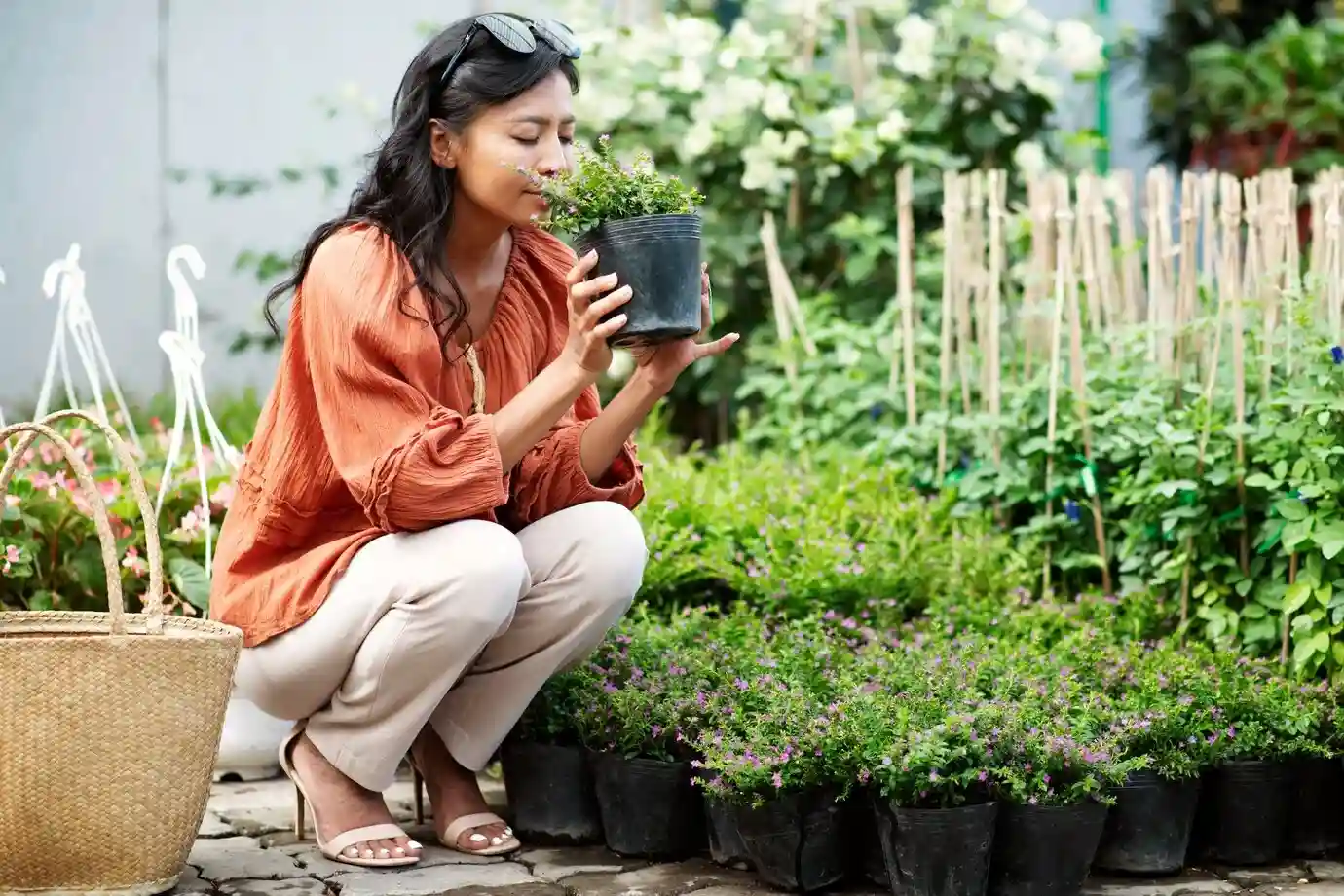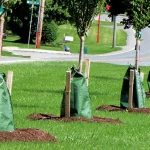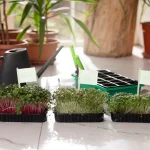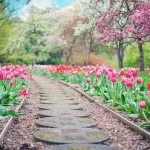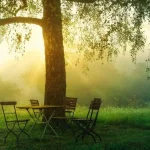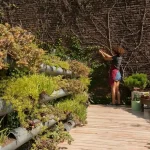Gardening in small, shady areas can seem like a challenge at first. Working with limited sunlight requires creativity and thoughtful planning, whether it’s a narrow side yard, a cozy corner by the fence, or a small patch beneath a large tree. However, the right approach can transform even the most minor shady corner into a beautiful, inviting oasis. As someone who’s spent countless hours working with these tricky spots, I can attest to the joy of turning a dull, overlooked space into a lush haven filled with vibrant, low-light plants.
Understanding Shade and Its Impact on Your Garden
Before discussing specific plants or techniques, it’s essential to understand what “shade” really means in gardening. Shade can take many forms, from deep, almost total shade to partial shade, where sunlight filters through trees or buildings. Daily sunlight your shady space receives plays a massive role in determining which plants will thrive.
The Different Types of Shade
- Full Shade: This is when a space receives little to no direct sunlight throughout the day. It’s often the result of tall trees, dense foliage, or buildings casting shadows. Plants in these areas must be specially selected for their ability to survive with minimal light. Common choices include ferns, hostas, and certain varieties of ivy.
- Partial Shade: This area gets a few hours of indirect sunlight daily, often in the morning or late afternoon. While still considered low light, these spaces offer more flexibility in plant selection. Plants like astilbes, columbines, and certain types of begonias thrive here.
- Dappled Shade: Dappled shade occurs when sunlight filters through the leaves of trees or overhead plants. The light may shift throughout the day, providing brief periods of warmth and light. Dappled shade opens up opportunities for a wider variety of plants, such as foxgloves, primroses, and hostas.
I’ve experienced firsthand how tricky it can be to make these spaces work. One of my earliest gardening projects involved a narrow alleyway in my backyard. Despite being surrounded by tall fences, this area didn’t receive much direct sunlight, but I was determined to make it work. After some research and trial and error, I discovered that while some plants were too delicate for the low-light conditions, others seemed to flourish in the dimmer areas. This experience opened my eyes to the opportunities hidden in shady spots.
The Power of Patience and Perseverance
“Patience is key. Establishing a thriving garden in a shady spot may take time, but the rewards are well worth the wait,” says an experienced gardener (hypothetical quote). The same was true for me. I often remind myself that garden transformations take time, especially in a shady environment. The soil in these areas tends to be more compact, and the absence of direct sunlight can slow down the growth of certain plants. But with time, the results are nothing short of magical.
Preparing the Soil for Shade Gardens
Shady spots often have dense, moisture-retentive soil, which can lead to root rot for some plants. To improve this, I always amend the soil with compost and organic matter to increase aeration and drainage. A well-prepared garden bed makes all the difference in achieving a thriving garden, whether in the shade or full sun.
Choosing the Right Plants for Shady Areas
The most crucial aspect of gardening in shady spaces is selecting the right plants. Many misconceptions exist that only a handful of plants can survive in low-light conditions. While it’s true that some plants need full sun to thrive, others flourish in partial or even complete shade. “Don’t fight the shade; work with it. Choose plants that thrive in low-light conditions,” advises a gardening expert (hypothetical quote).
Best Plants for Full Shade
- Ferns: Ferns are some of the best plants for full shade. They add lush greenery and texture without needing direct sunlight. Varieties like the Boston or lady fern thrive in shaded environments, creating a beautiful and rich look.
- Hostas: These classic shade-loving plants are known for their striking foliage in various shades of green, blue, and yellow. They’re perfect for adding texture and contrast to a shaded area and do well in full and partial shade.
- Astilbes: Astilbes offer feathery, plume-like flowers that add color and visual interest to a shaded garden. They thrive in moist, shady areas and bloom in vibrant shades of pink, red, and white.
Best Plants for Partial Shade
- Begonias: Begonias are versatile plants that can tolerate a range of lighting conditions. They bloom beautifully in partial shade, offering bright, eye-catching flowers in various colors, from red to white to pink.
- Columbines: These delicate flowers are a perfect choice for areas with more sunlight. They thrive in dappled or partial shade and add a touch of whimsy to any garden with their unique, bell-shaped flowers.
- Impatiens: If you want a pop of color, impatiens are a fantastic choice for shaded gardens. They offer vibrant blooms in reds, pinks, purples, and whites and do best in areas with indirect sunlight.
Maximizing Vertical Space in Shady Gardens
“Vertical space is your friend in a small shady garden. Utilize climbing plants and trellises to maximize your growing area,” suggests an urban gardener (hypothetical quote). When working with limited space, vertical gardening is a game-changer. Rather than relying solely on the ground for planting, consider adding climbing plants or using trellises and arbors to make the most of your small area.
Climbing Plants for Shady Gardens
- Ivy: Ivy is one of the easiest climbing plants to grow in the shade. It’s fast-growing, low-maintenance, and adds a touch of elegance to any vertical space. It can be used to cover walls, fences, or trellises.
- Clematis: Clematis vines bloom in various colors and can thrive in partial shade. They’re great for growing on trellises or arbors, bringing vibrant flowers and height to your shady space.
- Sweet Peas: Sweet peas are a fantastic option if you want a fragrant, colorful climbing plant. They do well in partial shade and add a lovely scent to your shady garden area.
Adding Aesthetic Features to Enhance Your Shady Garden
Another way to elevate the look of a small shady garden is by incorporating unique features that enhance its visual appeal. “Incorporate unique features like water features or decorative stones to add visual interest to your shady garden,” suggests a garden designer (hypothetical quote). Shady gardens can sometimes feel heavy or monotonous, but the right decorative touches make all the difference.
Water Features
Adding a small fountain or birdbath to your garden can provide a sense of tranquility. The sound of running water is soothing and can bring a lively element to an otherwise calm, shaded space. I love adding these features to my gardens as they attract birds and butterflies, creating a more dynamic environment.
Decorative Stones and Garden Art
Consider using stones, pebbles, or even unique garden art pieces to break up the green space. These elements add texture and interest, and they’re especially effective in shaded areas where bright flowers might not be as plentiful.
The Benefits of Gardening in Shade
While shade could limit your gardening options, it offers unique opportunities. As one horticulturalist (hypothetical quote) wisely put it: “Embrace the shade. It offers unique opportunities for a diverse and interesting garden.” Shade-loving plants often have vibrant foliage and flowers that bring variety to your space. Additionally, shaded gardens are typically more astonishing and require less water, making them more sustainable and easier to care for.
Reduced Pest Problems
I’ve also noticed that shaded areas have fewer pests than sunlit spots, making gardening less stressful. I don’t need to worry about insects like aphids or spider mites wreaking havoc on my plants as much as I do in sun-soaked parts of the yard.
Caring for Your Shady Garden
Even though shaded gardens require less sunlight, they still need regular care. Keep an eye on the moisture levels in the soil, as shaded areas can sometimes be prone to dampness, which can lead to mold or root rot. Conversely, ensure your garden isn’t too dry, as many shade-loving plants still require consistent watering to thrive. Mulching is also essential to retain moisture and keep weeds at bay.
Fertilizing Shady Gardens
Fertilizing your shady garden once or twice a year can help plants grow strong and vibrant. I usually opt for organic fertilizers as they tend to be gentler on the soil and the plants and enrich the soil with slow-release nutrients.
Conclusion: The Joy of Gardening in Shady Areas
Gardening in small, shady areas offers a special kind of joy. You can turn a dim corner into a lush paradise by selecting the right plants, maximizing vertical space, and incorporating decorative features. While it may take some time and patience, as an experienced gardener once said, “The rewards are well worth the wait.”
So, whether you’re working with a small corner or a more expansive shady spot, embrace the challenges and rewards of gardening in low-light conditions. Your shady garden will be a place of beauty and a peaceful retreat where you can relax and enjoy the fruits of your labor.

